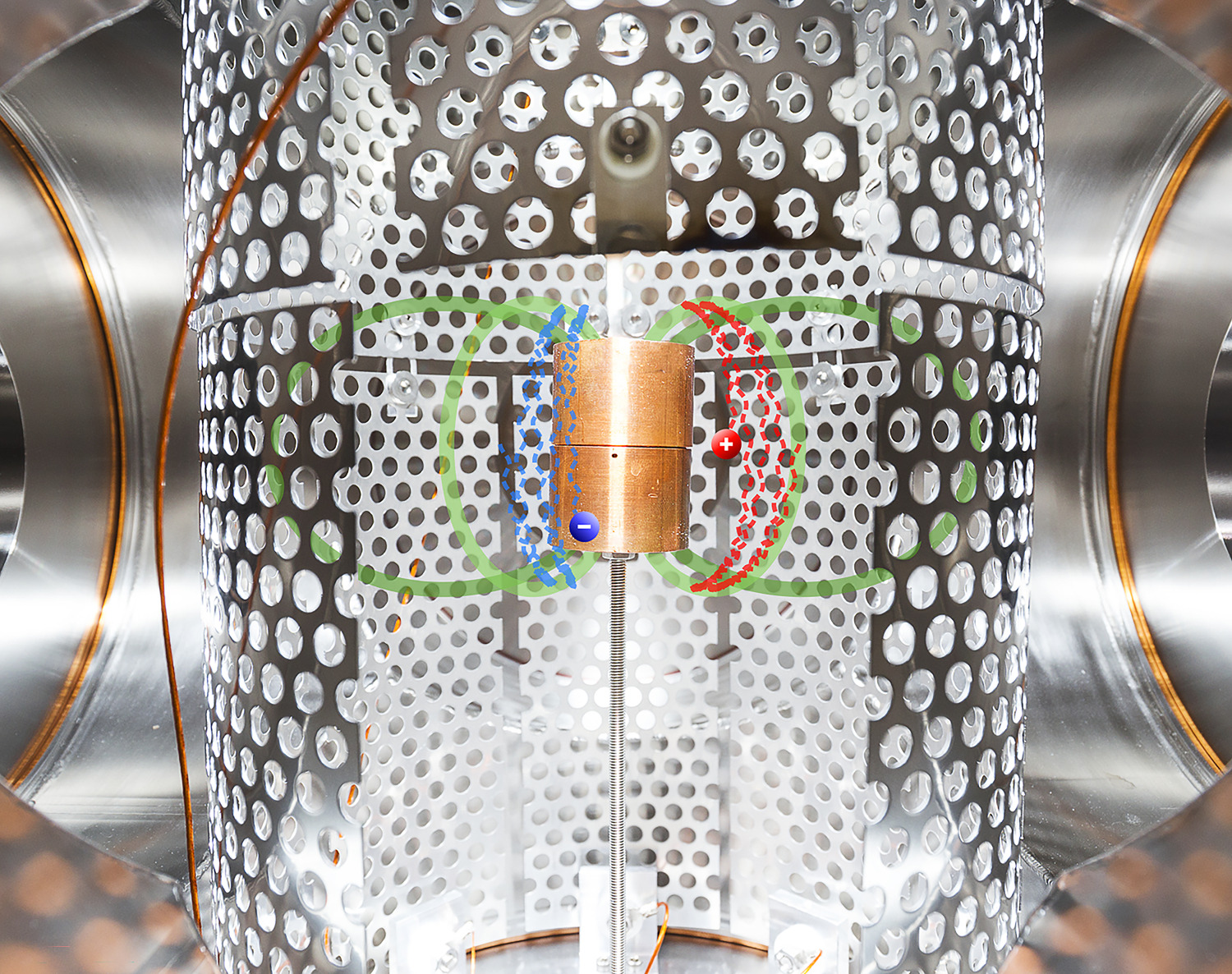https://doi.org/10.1140/epjd/s10053-024-00821-x
Regular Article
Injection, confinement, and diagnosis of electrons and positrons in a permanent magnet dipole trap
1
Max Planck Institute for Plasma Physics, 85748 Garching & 17491, Greifswald, Germany
2
Technische Universität München, 85748, Garching, Germany
3
University of California San Diego, 92093, La Jolla, CA, USA
4
Applied Materials, 85551, Heimstetten, Germany
5
TicketSwap, 1012 KL, Amsterdam, The Netherlands
6
Type One Energy Group, 53703, Madison, WI, USA
7
University of Tokyo, 277-8561, Kashiwa, Chiba, Japan
Received:
22
November
2023
Accepted:
23
February
2024
Published online:
5
December
2024
Prerequisites for the goal of studying long-lived, magnetically confined, electron–positron pair plasmas in the laboratory include the injection of both species into the trap, long trapping times, and suitable diagnostic methods. Here we report recent progress on these tasks achieved in a simple dipole trap based on a supported permanent magnet. For the injection of electrons, both an  drift technique (of a
drift technique (of a  2–
2– A, 6-eV beam) and “edge injection” (from a filament emitting a few mA and biased to some tens of volts) have been demonstrated; the former is suitable for low-density beams with smaller spatial and velocity spreads, while the latter employs fluctuations arising from collective behavior. To diagnose the edge-injected electrons, image potentials and currents induced on a wall probe, the magnet case, and wall electrodes were measured. Confinement of drift-injected positrons, measured experimentally, exhibited at least two well-separated timescales. Simulations reproduced this qualitatively, using a simple model of elastic collisions with residual background gas, and point to small adjustments for increasing trapping times. In a major upgrade to diagnostic capabilities, 25 bismuth germanate detectors, placed in three reentrant ports, are able to localize annihilation gammas, which will be used in future experiments to distinguish between different loss channels.
A, 6-eV beam) and “edge injection” (from a filament emitting a few mA and biased to some tens of volts) have been demonstrated; the former is suitable for low-density beams with smaller spatial and velocity spreads, while the latter employs fluctuations arising from collective behavior. To diagnose the edge-injected electrons, image potentials and currents induced on a wall probe, the magnet case, and wall electrodes were measured. Confinement of drift-injected positrons, measured experimentally, exhibited at least two well-separated timescales. Simulations reproduced this qualitatively, using a simple model of elastic collisions with residual background gas, and point to small adjustments for increasing trapping times. In a major upgrade to diagnostic capabilities, 25 bismuth germanate detectors, placed in three reentrant ports, are able to localize annihilation gammas, which will be used in future experiments to distinguish between different loss channels.
© The Author(s) 2024
 Open Access This article is licensed under a Creative Commons Attribution 4.0 International License, which permits use, sharing, adaptation, distribution and reproduction in any medium or format, as long as you give appropriate credit to the original author(s) and the source, provide a link to the Creative Commons licence, and indicate if changes were made. The images or other third party material in this article are included in the article's Creative Commons licence, unless indicated otherwise in a credit line to the material. If material is not included in the article's Creative Commons licence and your intended use is not permitted by statutory regulation or exceeds the permitted use, you will need to obtain permission directly from the copyright holder. To view a copy of this licence, visit http://creativecommons.org/licenses/by/4.0/.
Open Access This article is licensed under a Creative Commons Attribution 4.0 International License, which permits use, sharing, adaptation, distribution and reproduction in any medium or format, as long as you give appropriate credit to the original author(s) and the source, provide a link to the Creative Commons licence, and indicate if changes were made. The images or other third party material in this article are included in the article's Creative Commons licence, unless indicated otherwise in a credit line to the material. If material is not included in the article's Creative Commons licence and your intended use is not permitted by statutory regulation or exceeds the permitted use, you will need to obtain permission directly from the copyright holder. To view a copy of this licence, visit http://creativecommons.org/licenses/by/4.0/.





